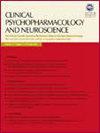Risk of Breast Cancer in Association with the Use of Second-generation Antipsychotics.
IF 2.7
4区 医学
Q3 NEUROSCIENCES
引用次数: 1
Abstract
Objective Previous studies regarding the relationship between the risk of breast cancer (BC) and antipsychotics use have reported inconsistent findings. Insufficient sample size and/or observation period may have hindered revealing the risk of BC associated with antipsychotics use. We aimed to investigate whether the use of second-generation antipsychotics (SGA) is associated with increased risk of BC. Methods We used the Health Insurance Review Agency database in South Korea between 2008 and 2018. The index date was determined as the date of the first antipsychotic prescription. We selected women prescribed SGAs for more than 30 days within a year from the index date and age-matched controls, yielding 498,970 cases and 997,940 controls. The Cox proportional hazards regression model was used for estimating the risk. Results The incidence rates of BC were 109.74 and 101.51 per 100,000 person-years in the case and control groups, respectively. There was an increased risk of BC in the case group (hazard ratio [HR] = 1.08, 95% confidence interval [CI] 1.04−1.13). There was a higher risk of BC in subjects prescribed with ≥ 10,000 mg of olanzapine equivalent dose (HR = 1.29, 95% CI 1.14−1.46) than those with < 10,000 mg (HR = 1.05, 95% CI 1.00−1.11). The increased risk of BC in the case group became significant after six years of the observation period (≥ 6 years HR = 1.24, 95% CI 1.14−1.35, 3 to < 6 years HR = 1.06, 95% CI 0.97−1.15, < 3 years HR = 1.02, 95% CI 0.95−1.09). Conclusion This study indicated that the use of SGAs is associated with increased risk of BC in a long-term relationship with a dose-response pattern.


乳腺癌风险与第二代抗精神病药物的使用有关。
目的:以往关于乳腺癌(BC)风险与抗精神病药物使用之间关系的研究报道了不一致的结果。样本量和/或观察期不足可能阻碍揭示与使用抗精神病药物相关的BC风险。我们的目的是调查第二代抗精神病药物(SGA)的使用是否与BC风险增加有关。方法:我们使用韩国健康保险审查机构2008年至2018年的数据库。索引日期确定为第一次抗精神病药物处方的日期。我们选择了从指标日期起一年内服用SGAs超过30天的女性和年龄匹配的对照组,得到498,970例和997,940例对照。采用Cox比例风险回归模型进行风险估计。结果:病例组和对照组的BC发病率分别为109.74和101.51 / 10万人-年。病例组发生BC的风险增加(风险比[HR] = 1.08, 95%可信区间[CI] 1.04-1.13)。服用奥氮平当量剂量≥10,000 mg的受试者发生BC的风险(HR = 1.29, 95% CI 1.14-1.46)高于服用< 10,000 mg的受试者(HR = 1.05, 95% CI 1.00-1.11)。病例组的BC风险增加在观察期6年后变得显著(≥6年:HR = 1.24, 95% CI 1.14-1.35, 3至< 6年:HR = 1.06, 95% CI 0.97-1.15, < 3年:HR = 1.02, 95% CI 0.95-1.09)。结论:本研究表明,SGAs的使用与BC风险增加存在剂量-反应模式的长期关系。
本文章由计算机程序翻译,如有差异,请以英文原文为准。
求助全文
约1分钟内获得全文
求助全文
来源期刊

Clinical Psychopharmacology and Neuroscience
NEUROSCIENCESPHARMACOLOGY & PHARMACY-PHARMACOLOGY & PHARMACY
CiteScore
4.70
自引率
12.50%
发文量
81
期刊介绍:
Clinical Psychopharmacology and Neuroscience (Clin Psychopharmacol Neurosci) launched in 2003, is the official journal of The Korean College of Neuropsychopharmacology (KCNP), and the associate journal for Asian College of Neuropsychopharmacology (AsCNP). This journal aims to publish evidence-based, scientifically written articles related to clinical and preclinical studies in the field of psychopharmacology and neuroscience. This journal intends to foster and encourage communications between psychiatrist, neuroscientist and all related experts in Asia as well as worldwide. It is published four times a year at the last day of February, May, August, and November.
 求助内容:
求助内容: 应助结果提醒方式:
应助结果提醒方式:


